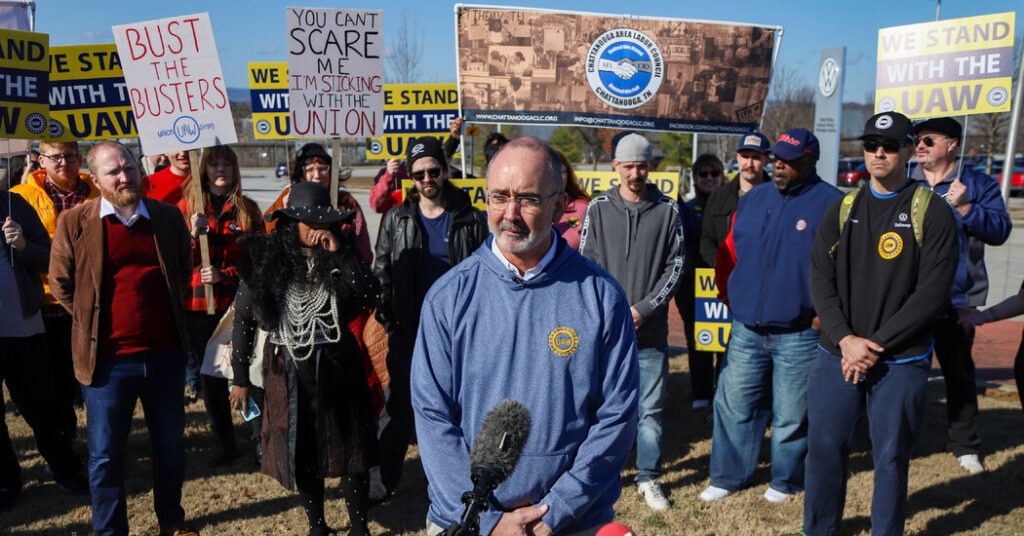“If workers in Chattanooga get a great contract, a big raise, better health benefits, and then the same thing at Mercedes, there will be a lot more good opportunities to win good contracts in short order,” stated Madeline Janis, co-executive director of Jobs to Move America, a bunch that seeks to create good jobs in clear know-how industries.
Ms. Janis, whose group is concerned in unionizing manufacturing facility employees within the South, stated the momentum might journey past the auto business to different producers as a result of staff at completely different corporations within the area typically know each other and focus on these points. “Their brothers and sisters and spouses are working at other plants,” she stated. “It will be all over social media.”
And some consultants stated {that a} rise in unionization at factories might unfold to different kinds of jobs. “The enthusiasm is contagious across sectors,” stated David Pryzbylski, a lawyer at Barnes & Thornburg who represents employers. “People look at it and say, ‘Hey, I think there’s something here. Maybe I should be interested in it, too.’”
Several employees echoed the purpose, saying they’d drawn encouragement from labor actions in different industries over the previous few years. Successful campaigns in Hollywood and at corporations like Starbucks and Apple “have been a major boon for us,” stated Emma Geiger, a employee at Sega of America who helped unionize the online game maker final 12 months. “Especially in the perception of unions on the whole as not something to be feared, but to be embraced.”
Overall, almost 70 p.c of Americans say they help unions, in keeping with Gallup, up from about 50 p.c a decade and a half in the past. After dropping for a number of years, the variety of union members elevated by almost 280,000 in 2022 and by about half that quantity final 12 months, although the share of employees in unions dropped barely as a result of much more folks entered the work drive. Filings for union elections had been up 35 p.c within the six months ending in March in contrast with the identical interval one 12 months earlier, in keeping with the National Labor Relations Board.


